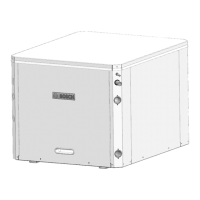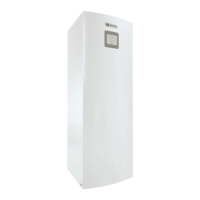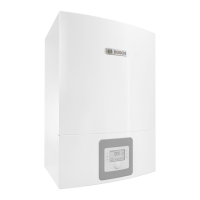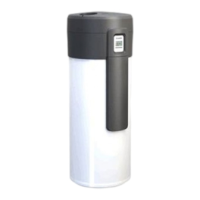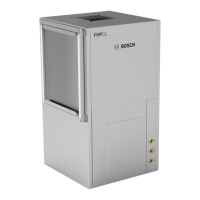Water systems and pipework
CS3000 AWP – 6721852570 (2023/04)
50
Fig. 65 Non-return valve
5.3 Hydraulic schemes
Fig (Graphic 379, Standard unit)
Fig ( Graphic 380, Unit + pump)
1. Exchanger
2. Antifreeze heater (optional)
3. Water temperature probe
4. Drain
5. Water flow switch
6. Vent
7. System loading safety pressure switch
8. Pump
9. Safety valve
10.N.D.
11.Shut-off valves
12.Filter
13.Flexible couplings
14.Piping supports
15.Exchanger chemical cleaning bypass
16.System cleaning bypass
17.N.D
Fig ( Graphic 381, Unit + storage tank)
1. Exchanger
2. Antifreeze heater
3. Water temperature probe
4. Drain
5. Water flow switch
6. Vent
7. System loading safety pressure switch
8. Pump
9. Safety valve
10.Storage tank
11.Shut-off valves
12.Filter
13.Flexible couplings
14.Piping supports
15.Exchanger chemical cleaning bypass
16.System cleaning bypass
17.Domestic hot water valve (AWP16 - AWP24 and AWP31 - AWP41)
Fig ( Graphic 382, Unit + 3 way valve for domestic hot water)
17B. Domestic hot water valve (AWP53 - AWP59)
5.4 Victaulic connections
▶ Remove the supplied connection union by acting on the connection
joint;
▶ Weld the union to the installation pipe;
▶ Perform the connection between the installation pipe and the
evaporator, using the joint.
Do not weld the system pipe with the victaulic connection joint. The
rubber gasket might be irreparably damaged.
Fig. 66 Victaulic connection with: connection union, joint and
connection joint (parts from left to right)
Operation sequence
Before starting the unit pump, consider the following steps:
▶ Close all vents in the high points of the water circuit of the unit;
▶ Close all drain shut-off valves in the low points of the water circuit of
the units:
–Exchangers
–Pumps
– Collectors
–Storage tanks
▶ Carefully wash the system with clean water: use the bypass to exclude
the exchanger from the flow (see diagram on Domestic hot water
Topic) fill and drain the system several times;
▶ Apply additives to prevent corrosion, fouling, formation of mud and
algae;
▶ Fill the system (do not use the unit pump);
▶ Conduct a leak test;
▶ Isolate the pipes to avoid heat dispersion and formation of
condensation;
▶ Leave various service points free (wells, vents, etc.).
Neglecting to wash the filter, will lead to a more frequent cleaning
process, and it may damage the exchangers and compressors.
5.5 Hydraulic system
The pipes must be designed and manufactured to limit pressure drops as
much as possible (i.e. optimise performance of the system).
Keep the following parameters to a minimum:
• Overall length
•Number of bends
• Changes of direction
0010045069-001
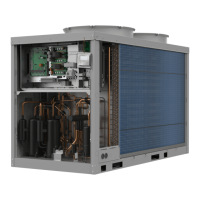
